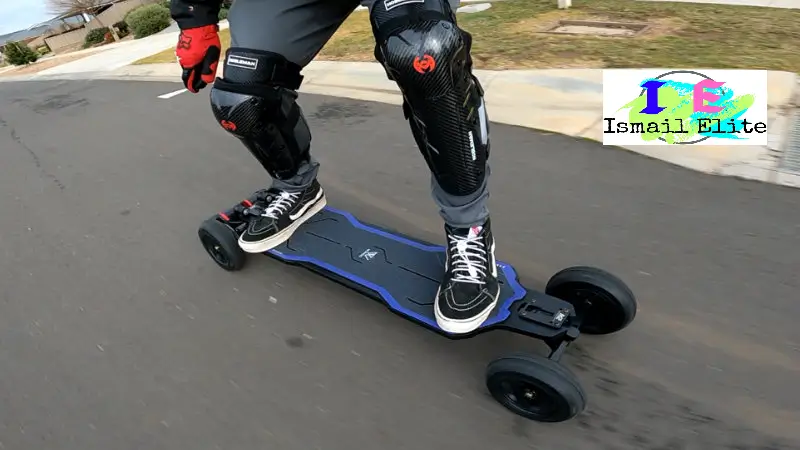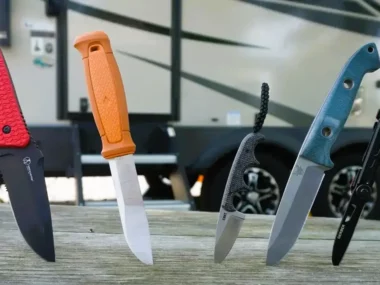Riding an electric skateboard provides a fun, eco-friendly transportation option and a thrill like no other. Zooming down roads or trails not only brings smiles but also freedom. However, Electric Skateboarding Safety should always come first to ensure accident and injury-free riding every time.
In this safety guide, I’ll cover must-know tips based on my years of e-skate experience so your rides are as safe as possible. We’ll explore protective gear, responsible riding practices, basic board maintenance, following traffic laws, and methods to enhance visibility and stability. Safety doesn’t need to impede enjoyment – it should enhance it!
Table of Contents
Wear Essential Protective Gear
Protecting your head, hands and body is a top priority for preventing severe injuries from falls at 15mph+. Here’s the vital protective gear every e-skate rider should use:
- Helmet: A sturdy skate helmet with dual certification protects your head from major damage in falls. MIPS technology also reduces concussion risks during crashes by mitigating energy forces on the brain.
- Gloves: Gloves allow securely gripping the board when carving or braking while preventing painful road rash on hands if you happen to fall. Look for padded palms with wrist guards.
- Knee/Elbow Pads: Hard shell knee and elbow pads cushion impacts to joint areas helping you slide out falls rather than absorb direct forces into your skeleton.
These three items provide substantial impact and abrasion protection. And don’t forget the value of wrist guards for preventing fractures. While a helmet and pads may not seem “cool”, serious injuries aren’t either!
Practice Responsible Group Riding
When riding with a group, extra diligence towards safety for both you and them is crucial. Here are key group riding safety tips:
- Leave Space: Always leave at least 10 feet even between riders to allow for stopping, passing or falls without collisions.
- No Tandem Riding: While fun, doubling up increases risks of high-speed falls and lack of control. Ride your own board only.
- Announce Hazards: Use clear signals when slowing for grades or pointing out debris, pedestrians or cracks ahead to riders behind you. Communication avoidance surprises.
- Plan Group Halts: Stopping as an entire group prevents rear-end collisions. Designate regroup points on longer rides to reconnect and ensure all riders are okay.
By incorporating responsible practices, group rides stay incident-free so the focus stays on enjoyment with good company!
Master the Basics First
Attempting advanced electric skateboarding without a proper foundation of core riding skills and board familiarity will undoubtedly increase your changes of falling. Follow this basic skills progression:
- 1st – Practice board balance, pushing, footbraking, kickturns & stopping completely on a standard longboard before advancing to an e-board.
- 2nd – Find an open, flat smooth area without vehicles to learn throttle control, speed modes, braking and direction changes on your electric skateboard.
- 3rd – Gradually tackle small hills, uneven terrain and higher speeds as e-boarding proficiency increases. Attempting advanced terrain or busy streets too early multiplies safety risks.
Similar to learning any sport, master fundamentals first before advancing to more challenging techniques or environments. Doing so establishes critical muscle memory and skills providing the reaction capabilities that could prevent an accident.
-

Magnis nam penatibus -

Pede nascetur eros -

Sit dis sed ante
Perform Routine Maintenance
While maintenance may seem only an performance concern, keeping your electric skateboard in top shape drastically promotes safety by ensuring properly functioning components. Be diligent about inspecting these elements before each ride:
- Wheels: Check bearings spin freely and that there are no cracks or debris stuck which could cause abrupt stops or altered traction.
- Trucks: Confirm trucks are not bent or broken and that all mounting hardware is tight. Loose trucks drastically heighten risks of speed wobbles.
- Brakes: Ensure brakes pass a static test and have sufficient stopping power. Weak brakes lead to longer stopping distances.
- Lights: For riding at night, confirm all running and brake lights are functioning to remain visible.
Performing these routine checks only takes a few minutes but verifies your e-board won’t suffer mechanical failures during a ride that could lead to loss of control.
Follow Traffic Laws
Electric skateboards legally qualify as non-motorized vehicles like bicycles on public roads. So you must obey all basic traffic laws just as a bike would:
- Ride in Bike Lanes when Available
- Stop Completely at Red Lights & Stop Signs
- Use Arm Signals when Turning
- Yield to Pedestrians
While riding on sidewalks seems tempting, it remains illegal in most areas and introduces risks to pedestrians. By following traffic laws and having courtesy for vehicles and people around you, it keeps public riding safe and positive for the e-boarding community.
Enhance Visibility
Part of responsible riding includes taking measures to enhance your visibility to motorists, bikers and pedestrians. Use these methods to improve chances of being seen:
- Bright Clothing: Wear reflective shirts or vests adding reflectivity strips to your board. Visibility gear dramatically increases the distances drivers can see you.
- Head/Tail Lights: Utilizing constant front white and rear red blinking LED lights whenever riding amongst traffic ensures other use roads can clearly see your location, speed and direction from a distance.
- Audible Warning Device: Mount a loud horn to notify walkers when passing from behind. Bell and horn alerts make your presence known.
Increasing visibility is key for safely riding during dawn, dusk and evening hours. Don’t assume drivers will notice you – make sure they will!
Master Footbraking
Before riding at top electric skateboard speeds, it is essential to master speed reduction and stopping techniques without motor assistance through footbraking. Learn to gradually scrape your rear foot on the ground to scrub speed. Drag your front foot also to distribute braking forces. This adds a reliable backup stopping method in case of electronic brake loss.
Practice Defensive Riding
Assuming surrounding riders, cars and people see you or will yield is one of the biggest mistakes e-skaters make. Instead, ride defensively with caution by:
- Scanning well ahead to identify risks early with maximum reaction time.
- Understand blindspots of cars and avoid them.
- Leave ample stopping distances between yourself and vehicles/bikes ahead.
- Rail trails on the right when descending around corners limiting surprises.
By riding defensively, you expect the unexpected which avoids collisions when surprises do arise!
I hope this comprehensive electric skateboard safety guide gives all riders the knowledge to handle these thrilling boards responsibly. While e-skating provides unmatched freedom and enjoyment, keeping personal safety and responsible riding central to the experience ensures many miles of pleasurable accident-free adventures! Let me know if you have any other e-skateboarding safety questions!
-

Pellentesque venenatis ac
Md Ismail Hossen
- is a Professional & Trusted Outdoor Authority, provides a valuable insights & tips on Products.









